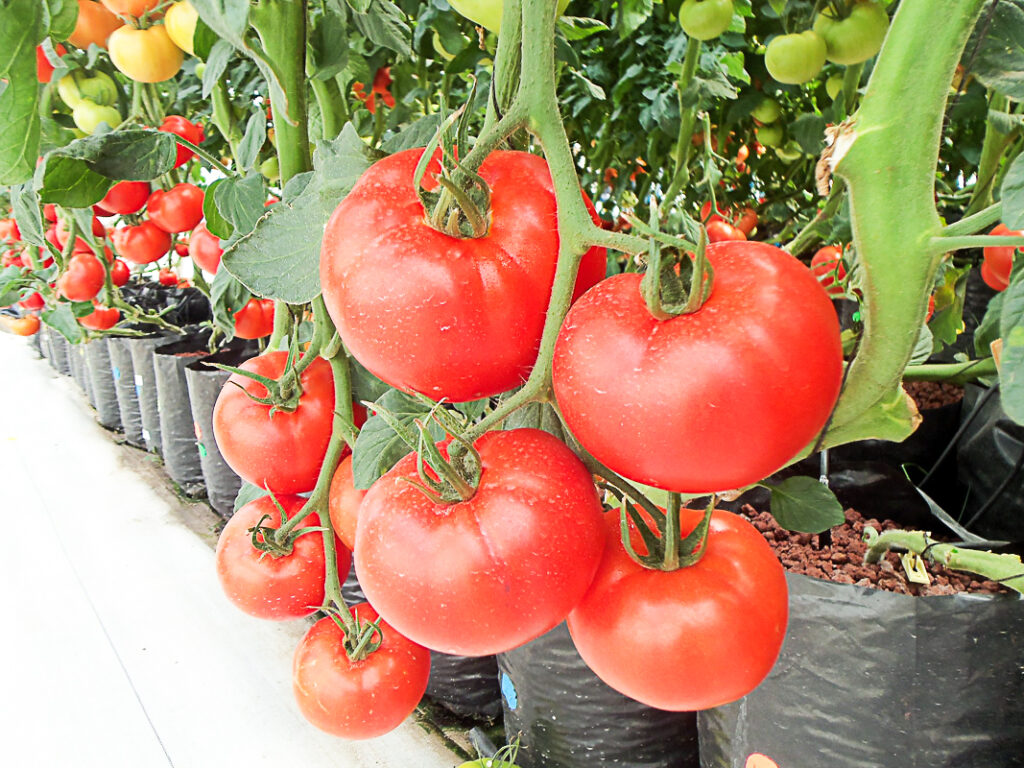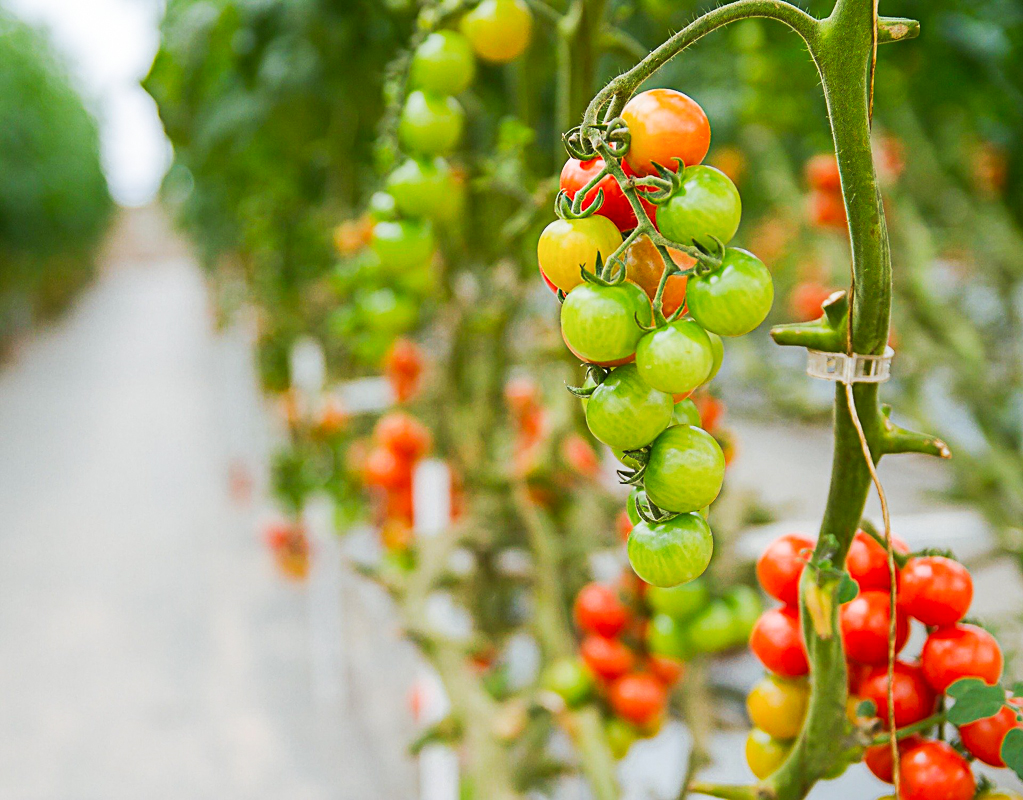Hydroponics is an economical technique of delivering fresh and healthy vegetables throughout the year. Hydroponic tomatoes grow their roots directly in water instead of soil. Adding a concentrated mineral nutrient solution to the water helps the tomatoes grow. We discuss tips that will assist you in growing hydroponic tomatoes successfully at home.
*This post contains compensated links. Find more info in my DISCLAIMER. As an Amazon Associate, I earn from qualifying purchases.
Want to start a hydroponic garden at home easily? Check out our recommendations for Best Hydroponics Starter Kits for Beginners.
How To Grow Hydroponic Tomatoes At Home
Growing tomatoes hydroponically is a simple science to master. You will need less physical work as compared to traditional gardening techniques. There is no need for soil to grow.
Hydroponically grown tomatoes have a lot of advantages over traditionally grown tomatoes. Their growth rate and production yield are higher. Not using soil makes hydroponic tomatoes cleaner. Although it is more difficult to grow tomatoes at home than other herbs, it’s still possible.
Hydroponic systems for tomatoes will allow you to grow them any time of the year and anywhere. Also, the systems are more efficient in water usage than soil-based techniques.
Choosing Between Seeds And Saplings

There are two options for growing tomatoes. You can start with seeds or with saplings, essentially like baby tomato plants.
Saplings are the simplest way to grow your hydroponic tomatoes because you get a head start. It is, however, not advisable to use saplings of tomatoes that are grown outdoors. Germs and pests could contaminate these saplings.
Saplings will allow you to grow rare tomato varieties found in garden stores and nurseries. It would be best if you placed tomato seedlings in a tray filled with growing medium, the substance used to grow hydroponically instead of soil. Use acidic water to wet the medium.
Cover the seedlings and keep them in a moist and damp area. Maintain the temperature at between 20 and 25 degrees Celsius. Tomatoes seedlings will sprout within two weeks. Once the seedlings sprout, immediately transfer them into the hydroponic system. The system should have adequate light.
Want to grow other vegetables at home? Check these out:
The Best Tomato Growing Kits For Home Gardeners
How To Grow Cucumbers At Home Using Hydroponics
Best Types Of Tomatoes For Hydroponics
There are two types of tomatoes, determinate and indeterminate. Determinate tomatoes are a bush type that will spread and sprawl along the ground. Indeterminate tomatoes have no height limit, and they will continue to grow and bear fruit.
Determinate vines are the best for tomato hydroponics. They can also be grown in small indoor areas. Unlike indeterminate tomatoes, determinate tomatoes grow to a set height. Flowering and bearing fruit will significantly reduce the growth of determinate tomatoes.
Specialty, vining, and heirloom are among the different tomato varieties suitable for hydroponics. Specialty varieties include cocktail tomatoes, cherry tomatoes, and plum tomatoes.
Vining varieties include Delilah, Giant Beefsteak, Brandywine, and Delilah. Heirloom varieties include Brandywine Pinke, Thessaloniki, Moskvich, and Mortgage Lifter.
Hydroponic Tomatoes Light Requirements
The amount of light a plant receives determines the level of photosynthesis. Light affects the quality and size of the fruit.
Tomatoes need intense light for at least eight hours a day. Some tomato varieties will yield better with up to 18 hours of light. Giving 16 hours of light can maximize fruit production.
Growing tomatoes with LED lights and metal halides will significantly increase productivity. LED lights give powerful light outputs.
Best Temperatures For Hydroponic Tomatoes
Tomatoes are warm-weather crops. They will perform well in temperatures ranging from 18 to 25 degrees Celsius. However, lower the temperature to between 12 and 18 degrees Celsius during the night.
For best results, keep the temperatures between the recommended ranges. Temperatures lower than 10 and above 32 degrees Celsius can damage hydroponic tomatoes.
A grow tent is a good choice because it will assist in maintaining the ideal temperature. It is also easier to control environmental factors with a grow tent.
The Best Nutrients For Hydroponically Grown Tomatoes

For best results, you will need different nutrients for your hydroponic tomatoes. It is advisable to use a nutrient mix specifically made for tomatoes to get a high yield. However, you can use a general plant nutrient mix for hydroponics.
Tomatoes require high levels of nitrogen, phosphorous, and potassium. The water should be slightly acidic with a pH value of 5.8 to 6.3. Having the correct nutrient mix will assist in achieving the ideal fertilizer and pH level.
Tomatoes will easily show symptoms if there are deficiencies in the nutrients. The following are signs of a deficiency in nutrients.
| Symptom | Deficiency |
| Yellow leaves | Low quantity nutrients or high pH |
| Red stems or curled-up leaf tips | Low pH |
| Curled down leaf tips | A very high nutrient level |
| Flowers falling off early | Low potassium level |
The Best Medium For Tomato Hydroponics
Using the suitable medium to support your hydroponic tomatoes can deliver higher yields. The hydroponic system you choose will determine the medium you.
There are a lot of choices since tomatoes can be grown using any hydroponic system. Some of the mediums available are Rockwool, expanded clay pellets, coco coir, and perlite.
The Best Hydroponic Systems For Growing Tomatoes At Home
Tomatoes work well with a wide range of hydroponic systems. They are heavy feeders and will require a high maintenance level, which can be a challenge for some hydroponic systems.
Tomatoes require huge amounts of micronutrients and potassium in the fruiting stage. This can be a challenge when using a recirculating system, which can quickly alter the pH level.
Closely monitor the nutrient, fertilizer, and pH levels in any of the hydroponic systems. A deficiency in any of them could affect the yield.
Hydroponic tomatoes can be grown in any of the following systems:
- Drip System
- Deep Flow System
- Nutrient Film System
- Ebb and Flow System
Our 5 Top Tips For Growing Hydroponic Tomatoes
Tip 1: Having The Best Tomato Variety
There are so many tomato varieties in the world. It is good to choose a type that will work well with your hydroponic system.
Determinate varieties are the best for hydroponics since they can be grown in small areas.
Tip 2: Choosing An Ideal Hydroponic System
Tomatoes are hardy crops and can do well with any hydroponic system. However, tomatoes are a high-maintenance crop. It g to have a system that will not quickly alter the fertilizer and pH levels.
Tip 3: Having The Best Conditions
Maintain the best conditions is vital because it will determine your yield. Tomatoes grow well in warm weather. Maintain temperatures of 18 to 25 degrees Celsius.
Intense light up to 16 hours a day will maximize the yield. A grow tent will also make it easier to control environmental factors.
Tip 4: Having The Best Nutrient Mix
Use a two-part nutrient mix specifically made for tomatoes because it will have a high yield. Tomatoes need a lot of nitrogen, phosphorous, and potassium.
Getting the correct fertilizer and pH level is the key to grow hydroponic tomatoes successfully. Closely monitor your crops for any signs of deficiency.
Tip 5: Choosing The Correct Medium
Having the correct medium to offer physical support to your hydroponic tomatoes is very critical. You can use a variety of mediums. Rockwool cubes are the best medium for growing tomatoes.
Growing Hydroponic Tomatoes At Home
Hydroponic tomatoes are suitable for indoor urban farming. They do not require a lot of skills and experience in agriculture. With a sound hydroponic system, you can quickly grow tomatoes all year round anywhere.
Don’t be afraid of growing tomatoes hydroponically. It could be your alternative income line, especially in the off-season when tomatoes fetch a reasonable price.
FAQs – Growing Hydroponic Tomatoes
With the right growing conditions and proper care, it takes on average between 8-12 weeks from initial planting until fruit on the vine. The amount of time will vary based on the type of tomato being grown.
100% yes. The list of fruit and vegetables suitable for hydroponics is extensive. One of the most popular and easiest to grow is tomatoes. From cherry tomatoes to Big Beef tomatoes, the options are endless.
Tomatoes work really well with a variety of hydroponic systems. One of the best is a Dutch-bucket system. Often referred to as a “Bato bucket”, this system allows plenty of room for the roots of a tomato plant to grow, thus absorbing the water and nutrients it needs to grow.
